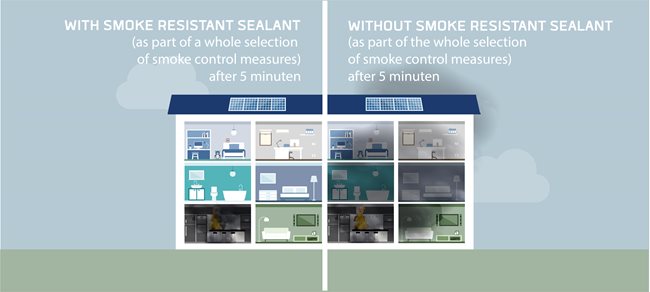Smoke-resistant seals with Sabaprotect M500
Depending on the building, SABA’s Sabaprotect M500 can be used to create smoke resistant and fire resistant* sealing joints in:
- Metal stud walls
- Timber frames
- Plasterboard walls
- Fermacell
- Joints in stone-like structures
- The connection between different types of stone substrates and wood frames
- The connection between different types of stone substrates and steel frames
The figure below illustrates the effect of a smoke resistant sealant in a building.

In addition to the product’s excellent smoke and fire resistance, thought has also been given to the risks inherent in the product itself. This is why Sabaprotect M500 is Emicode EC1 PLUS certified and can be safely processed, without any health risks. Thanks to its very low emission and label-free properties, the product is suitable for application in BREEAM, as well as LEED projects.
In situations in which the intensity and temperature of a fire is too high, everything burns up. That includes the sealant, but when Sabaprotect M500 burns, no toxic substances are released.
* up to 120-minute fire resistance rating; complies with the Sa and S200 standards for smoke resistance
Request your free whitepaper